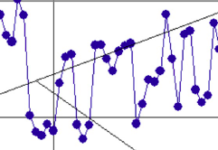RING! The school dismissal bell sounds, forcing you out of your nap and back into consciousness. This scenario is one that has been familiar to students for years, and various researchers from around the world are now crediting carbon dioxide as one factor forcing students into a slumber during class time.
into consciousness. This scenario is one that has been familiar to students for years, and various researchers from around the world are now crediting carbon dioxide as one factor forcing students into a slumber during class time.
Among the researchers studying carbon dioxide’s effect in classrooms are David Sundersingh, who works on the design, architecture, and engineering of eco-friendly buildings with the national firm Fanning/Howey Associates, Inc., and David Bearg, an independent mechanical engineer. Their 2003 article on indoor air quality names carbon dioxide as one of the pollutants widely prevalent in the classroom.
Carbon dioxide is released in all combustion and human metabolic processes such as respiration. In their article, authors Sundersingh and Bearg state, “In the developed world, 90% or more of our lives are dependent on the indoor air quality in homes, workplaces, and vehicles.”
Despite air quality’s significance to one’s well-being, researchers are finding troubling evidence of poor air quality in schools as a result of weak ventilation, inadequate filtration, and insufficient maintenance of air-managing equipment. According to the Environmental Protection Agency, many schools currently have air ventilation rates that are below recommended levels, leading to high levels of carbon dioxide in the classroom.
Pamela Becker Weilitz a doctor of nursing practice and a pulmonary nurse specialist at the John Cochran Division of the St. Louis Veterans Affairs Medical Center, agrees that human respiration leads to increased levels of carbon dioxide in a room. However, she also claims, “Other factors such as the ventilation in the room, the number of people in the room and the temperature of the room also play a role in carbon dioxide levels.”
Hence, when a large group of students reside in a classroom with little air ventilation for an extended period of time, the surrounding air is apt to have increased carbon dioxide levels as a result of the inevitable process of exhaling, which cannot be limited, and poor ventilation in the room, which can be improved.
A 2008 study by scientists from University College London (UCL) and Reading University (both in the U.K.) showed that this increase in carbon dioxide as the school day progresses actually causes students to become drowsy. To discover this, the researchers required students to answer a health symptom questionnaire and take a test that measures their ability to concentrate on schoolwork. The researchers found that students in classrooms with high levels of carbon dioxide and poor ventilation demonstrated an increase in health symptoms and lower concentration scores. They also compared ventilation in 50 year-old school buildings and new, heat-trapping school buildings, and found a correlation between carbon dioxide exposure and feelings of lethargy.
The ventilation rates in both old and new buildings “were equally appalling," says UCL researcher Dejan Mumovic, who claims carbon dioxide levels in stuffy classrooms have a major effect on student learning.
Although researchers believe carbon dioxide dooms students to feelings of sleepiness, have students and teachers recognized increased drowsiness during the school day’s progression? To answer this question, a survey was distributed to 85 high school freshmen and juniors, as well as 23 teachers, at a local, west county high school in Missouri that was built in 1954. Because the school is over 50 years old, it could have poor air ventilation in its classrooms.
According to the survey, over 50% of teachers usually keep their classroom doors open, but over 80% do not open windows often or ever, which could limit the classroom’s air ventilation. Although the teachers as a whole did not think their students become more tired throughout the day, over 85% of the surveyed students admitted to feeling at least somewhat more fatigued as the day continues.

This work is licensed under a Creative Commons Attribution-NonCommercial-NoDerivs 3.0 Unported License














Well done, Monica! This story really caught my interest- I definitely got a bit sleepy sometimes when I was in school, and I still do today in my office! I wonder if our ventilation is up to the EPA standards!
You attributed to several great sources, and I appreciated that you got a comment from a local doctor and even did your own research at school! Keep up the good work!
And I almost forgot- you had a great lede! It definitely caught my attention and brought me into the story.
This is a great article and very informative. Now I know that it isn’t the long hours of homework putting me to sleep in class it the carbon dioxide. Also, this would help teachers feel better about themselves because it may not be their lesson put students to sleep! Also this may influence the teachers to open their windows and doors in the classroom. very informative!!
Great article Monica! This topic is very interesting and you did a great job of explaining why carbon dioxide builds up in classrooms.
This is such great information! Now I know why I am always so tired in class in the afternoon!
Your article is very interesting. I definitely know that I get tired throughout the day and I would be interested in finding out more information as to why that is! I absolutely love your beginning – it is very creative and catchy. You did such a great job!
I thought this article was very insightful. It is definatly a topic that had never occured to me before. It was definatly an attention grabber.
i liked this article alot ! great info and i learned things i never knew.
I do not believe there to be enough information on the subject to convince me. The article seemed lacking in information on why carbon dioxide could cause drowzyness.
This article is very interesting. I did not know that due to the excessive amount of carbon dioxide in a classroom, we students are more tired throughout the day. I learned something new today and will refer this to my teachers.
very very nice lmao
Good job:smile